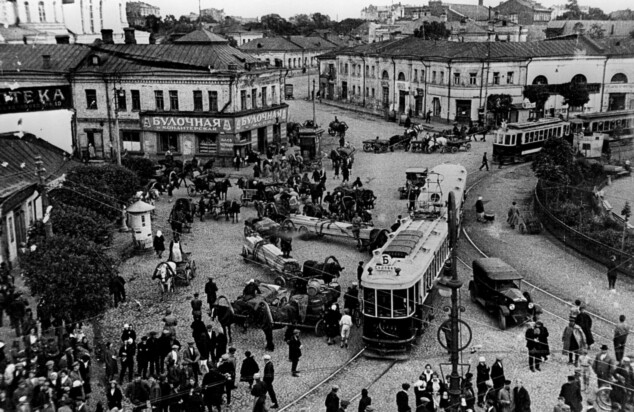March 25, 1899 saw the opening of Moscow’s first tram route, connecting the Butyrka Gate and Petrovsky Park. At first, the tramways were owned by commercial partnerships, but within a few years the network had been bought up by the Moscow authorities. Between 1907–1913, the City Railways Central Electric Power Station was built especially to power the tram network’s expansion. This station—known back then as the Tramway Plant—was the future
The Moscow Tramway
- Age:
- Age restrictions
- 0+

Trams on Kaluzhskaya Square in Moscow, 1929
Photo by RIA Novosti
First and foremost, the tram network was needed to transport workers from the city’s outskirts to their jobs at factories in its centre—only secondly did they serve passengers travelling within the city centre itself. By 1918, the combined length of the tramrails came to 323 kilometres, and the network numbered 39 routes, among them the ‘A’ route along the Boulevard Ring and the ‘B’ route along the Garden Ring. Tram drivers needed an impeccable knowledge of the city, and according to the memoirs of the writer Konstantin Paustovsky, they were required to attest to it in a special exam.
The First World War, the 1917 revolution, and the civil war caused devastation throughout the country, and this devastation extended to the transport networks: there were frequent fuel shortages, the tramways ran intermittently, and, when they did, they carried firewood more often than they carried passengers. When in the 1920s the Soviet electrification plan finally got underway, the Tramway plant would undergo a number of reconstructions to accommodate more modern equipment and connections to the Moscow-wide power grid. The construction of newer, more efficient energy-generating facilities outside the city meant the tram network came to depend less and less on
In the years to come, the tram network would continue to grow independently of the Tramway plant, until the construction of the Moscow metro in the 1930s saw many overground routes replaced with underground ones, and trolley bus wires began to replace tramrails.